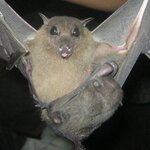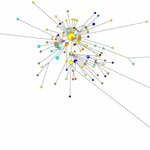Microbiology

Environmental groups believe that living in cities is better for the environment but if there is one thing that COVID-19 has made clear, it's that living in cities is better for spreading infectious disease also.
Despite having numerous large cities, the U.S. was on the verge of having measles wiped out, but as the anti-vaccine movement spread on the east and west coasts, they brought a resurgence of it. A group of researchers looked for its origins and found it may help provide answers about coronavirus, which is in the same family as the common cold but was discovered to be novel in…

Most public restrooms are grungy in the best of times. Now, we have the coronavirus risk to contend with, too. There are lots of risks – dirty sinks and door handles, airborne particles and other people in small, enclosed spaces who may or may not be breathing out the coronavirus.
So, how do you stay safe when you’re away from home and you’ve really got to go?
As a medical doctor and epidemiologist, I study infectious diseases involving the gastrointestinal tract. Here are four things to pay attention to when it comes to any public restroom.
What goes into the toilet doesn’t always stay there…

Though coronavirus is a new name for much of the world, microbiologists have worried about it for half a century. It is in the same family as the common cold virus but with the right mutation it can be deadly to those with risk factors for respiratory diseases because it is common like the common cold.
To microbiologists, the world is filled with pathogens so predicting the next plague when nature is always out to kill us can verge on paranoia; instead we are fortunate most new crises never happen. Let's hope that worry about global spread of the multi-resistant pathogen Stenotrophomonas…

Though coronavirus is known to much of the world by now, it is often used synonymously with COVID-19 by journalists. In scientific reality, there are a vast number of types of different coronaviruses, potentially as many as the thousands of bat species, but most of them can't be transferred to humans and pose no known threat.
SARS-CoV-2 is just one flavor but coronaviruses have been evolving for likely as long as bats have.
A recent paper compared the different kinds of coronaviruses living in 36 bat species from the western Indian Ocean and nearby areas of Africa and found that…

The early "evolutionary paths" SARS-CoV-2, the 2019 coronavirus that leads to COVID-19 in humans have been traced using phylogenetic network techniques and shows how it spread from Wuhan to Europe and America.
While there are too many rapid mutations in coronaviruses, they are in the same family as the common cold, to ever find a Patient Zero or even a settled family tree, analysis of the first 160 complete virus genomes to be sequenced from human patients show the original spread of the new coronavirus through its mutations.
A mathematical network algorithm, first used in…

Political critics can argue that the U.S. response (travel restrictions) to the coronavirus outbreak which began in Wuhan, China and rapidly spread was too harsh, but data show it was probably a greater error for other countries to posture about xenophobia before doing the exact same thing.
China was lying about coronavirus in January and likely still is, since their number of deaths has barely changed in a month while funeral incinerators were running non-stop. The number of coronavirus cases could have been reduced by 95 percent if China had been transparent about the virus three…

Though they are called giant viruses they're still among the tiniest denizens of the microbiome. A few genes' worth of DNA or RNA folded into a shell so small you need an electron microscope to see it, more like a stripped-down husk of an organism.
Giant viruses are ten times the size of their more compact cousins and with hundreds or even thousands of genes, so unlike the rest of the family that until first cataloged in 1992, researchers had dismissed them as bacteria.
Surveys of viral diversity had previously excluded them because of the filters researchers use to separate viruses…

Co-authored by by Lauren Philippi, Department of Human Health and Nutritional Sciences, University of Guelph
In late December 2019 an outbreak of
pneumonia cases arose in Wuhan, China. Patients presented with an acute
respiratory illness linked to the 2019 Novel Coronavirus (COVID-19). COVID-19
is a betacoronavirus, similar to Human Severe Acute Respiratory Syndrome (SARS)
and Middle Eastern Respiratory Syndrome (MERS) coronaviruses. SARS and MERS
both cause severe respiratory disease. Although COVID-19 is primarily
considered a respiratory virus, there is a strong link to cardiovascular…

Billions of years ago, an extinction occurred that dwarfed the event that wiped out the dinosaurs 65 million years ago. Its history is written in Canadian rocks and show Earth lost nearly 75 percent of its plant and animal species.
But it had a benefit for us. The die-off of microorganisms that shaped the Earth's atmosphere paved the way for larger animals to thrive.
Given the current coronavirus pandemic, the third of the last 17 years, not to mention annual flu and the other infectious diseases we face, it may seem that microbes are unstoppable, but even when biology on Earth was…

A new study claims the recent form of coronavirus, SARS-CoV-2, that causes the COVID-19 disease remains far longer in aerosol form than other experiments showed and up to 3 days on some surfaces.
The study says the virus is detectable for up to three hours in aerosols, up to four hours on copper, up to 24 hours on cardboard and up to two days on plastic and stainless steel. This is far longer than other studies of viruses in aerosols, which found them for 45 minutes.
The study attempted to mimic the virus being deposited onto everyday surfaces in a household or hospital setting by an…